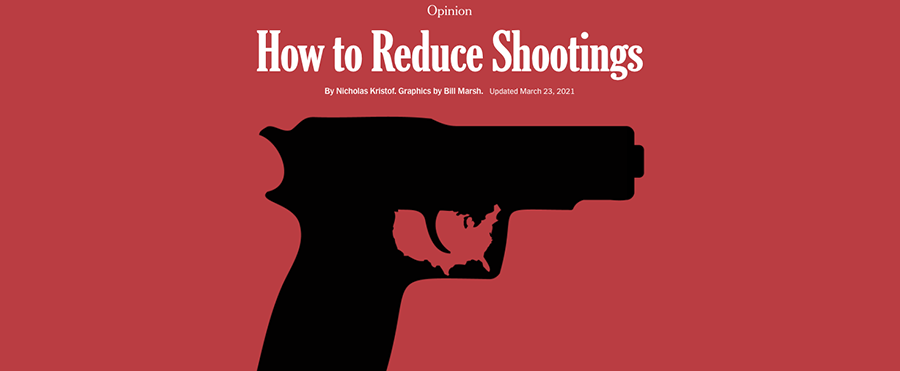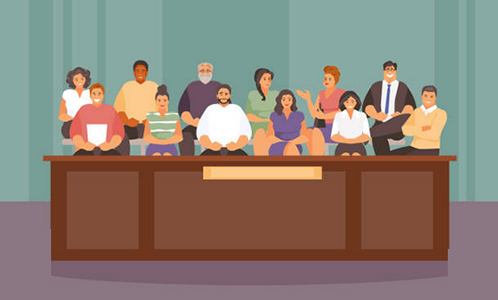||| FROM NEW YORK TIMES |||
America has been shaken by new mass shootings, in Georgia and Colorado, with at least 18 people killed. This essay originally ran in 2017, after a shooter killed 26 people in a Texas church, but the issue is still tragically relevant — and will remain so until America tightens its gun safety policies.
America has more guns than any other country
The first step is to understand the scale of the challenge America faces: The U.S. has more than 300 million guns — roughly one for every citizen — and stands out as well for its gun death rates. At the other extreme, Japan has less than one gun per 100 people, and typically fewer than 10 gun deaths a year in the entire country.
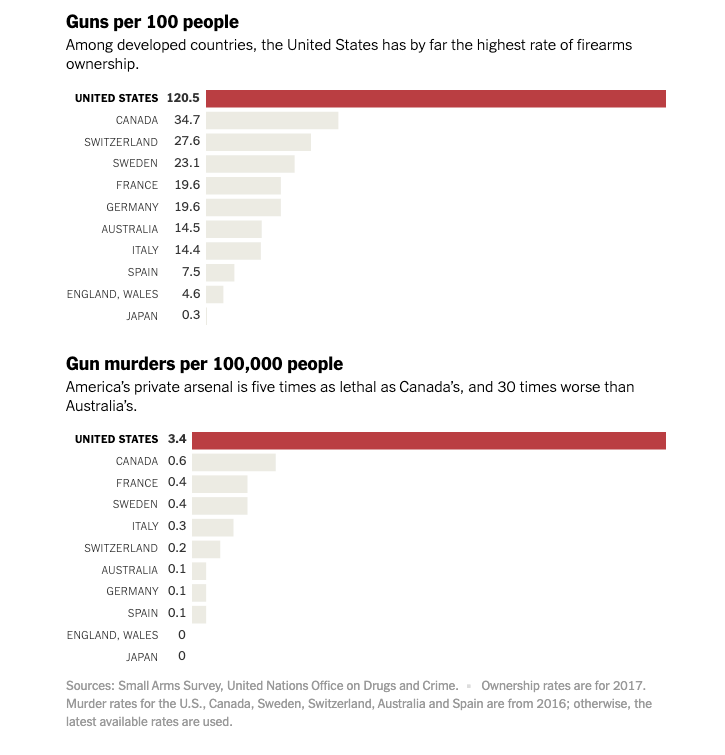
We have a model for regulating guns: automobiles
Gun enthusiasts often protest: Cars kill about as many people as guns, and we don’t ban them! No, but automobiles are actually a model for the public health approach I’m suggesting.
We don’t ban cars, but we work hard to regulate them — and limit access to them — so as to reduce the death toll they cause. This has been spectacularly successful, reducing the death rate per 100 million miles driven by 95 percent since 1921.
Take a look at the history of motor vehicle safety since World War II:
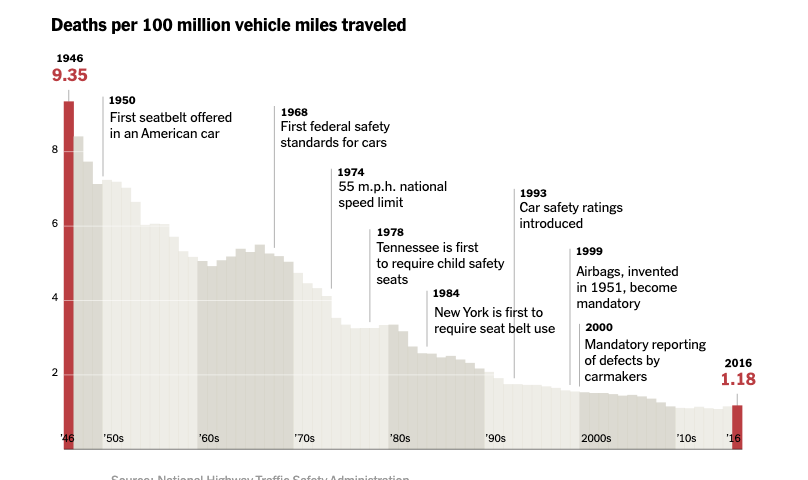
The liberal approach is ineffective.
Use a public health approach instead.
Frankly, liberal opposition to guns has often been ineffective, and sometimes counterproductive. The 10-year ban on assault weapons accomplished little, partly because definitions were about cosmetic features like bayonet mounts (and partly because even before the ban, such guns were used in only 2 percent of crimes).
The left sometimes focuses on “gun control,” which scares off gun owners and leads to more gun sales. A better framing is “gun safety” or “reducing gun violence,” and using auto safety as a model—constant efforts to make the products safer and to limit access by people who are most likely to misuse them.
What would a public health approach look like for guns if it were modeled after cars? It would include:
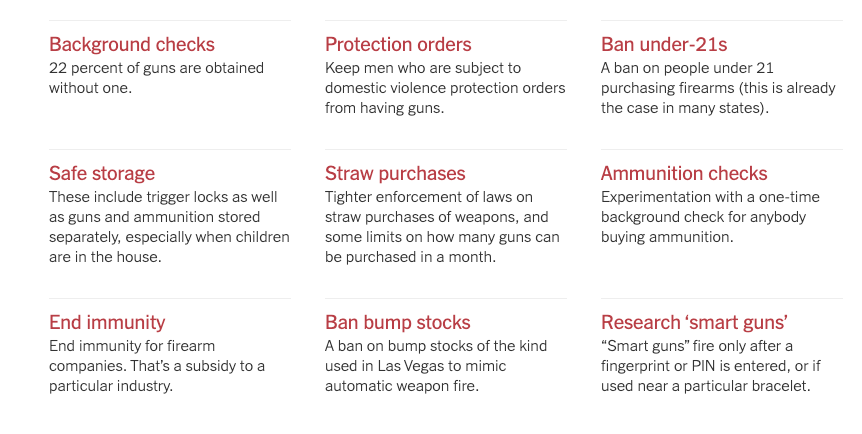
If someone steals my iPhone, it’s useless, and the same should be true of guns. Gun manufacturers made child-proof guns back in the 19th century (before dropping them), and it’s time to advance that technology today. Some combination of smart guns and safe storage would also reduce the number of firearms stolen in the U.S. each year, now about 200,000, and available to criminals.
We also need to figure out whether gun buybacks, often conducted by police departments, are cost-effective and help reduce violence. And we can experiment more with anti-gang initiatives, such as Cure Violence, that have a good record in reducing shootings.
Fewer guns = fewer deaths
It is true that guns are occasionally used to stop violence. But contrary to what the National Rifle Association suggests, this is rare. One study by the Violence Policy Center found that in 2012 there were 259 justifiable homicides by a private citizen using a firearm.
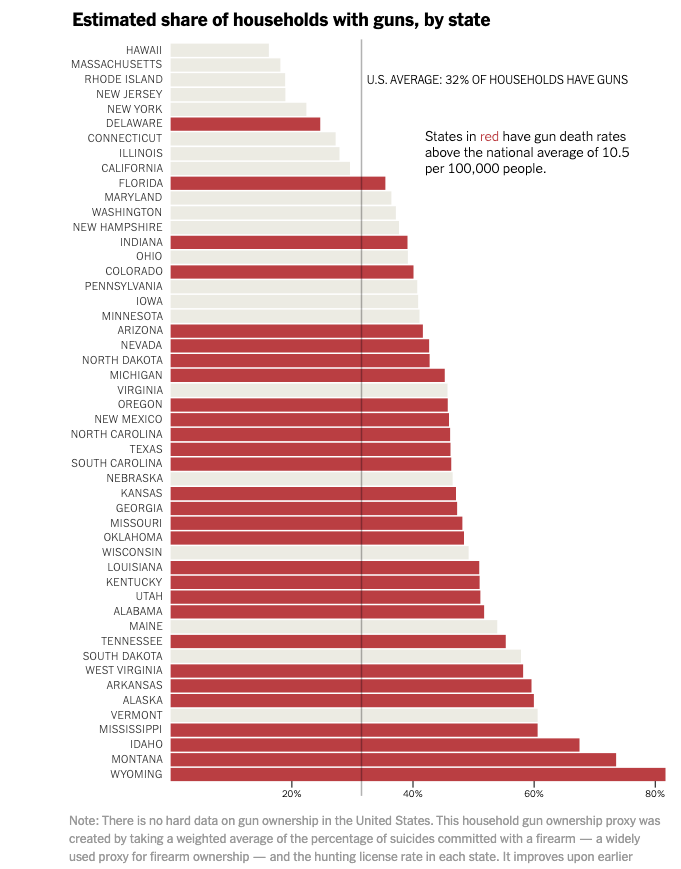
Lax laws too often make it easy not only for good guys to get guns, but also for bad guys to get guns. The evidence is overwhelming that overall more guns and more relaxed gun laws lead to more violent deaths and injuries. One study published in the Annals of Internal Medicine found that a gun in the house was associated with an increased risk of a gun death, particularly by suicide but also apparently by homicide.
REPRINTED AT THE REQUEST OF AN ORCASONIAN READER
READ FULL ARTICLE: www.nytimes.com/interactive/2017/11/06/opinion/how-to-reduce-shootings.html
**If you are reading theOrcasonian for free, thank your fellow islanders. If you would like to support theOrcasonian CLICK HERE to set your modestly-priced, voluntary subscription. Otherwise, no worries; we’re happy to share with you.**

